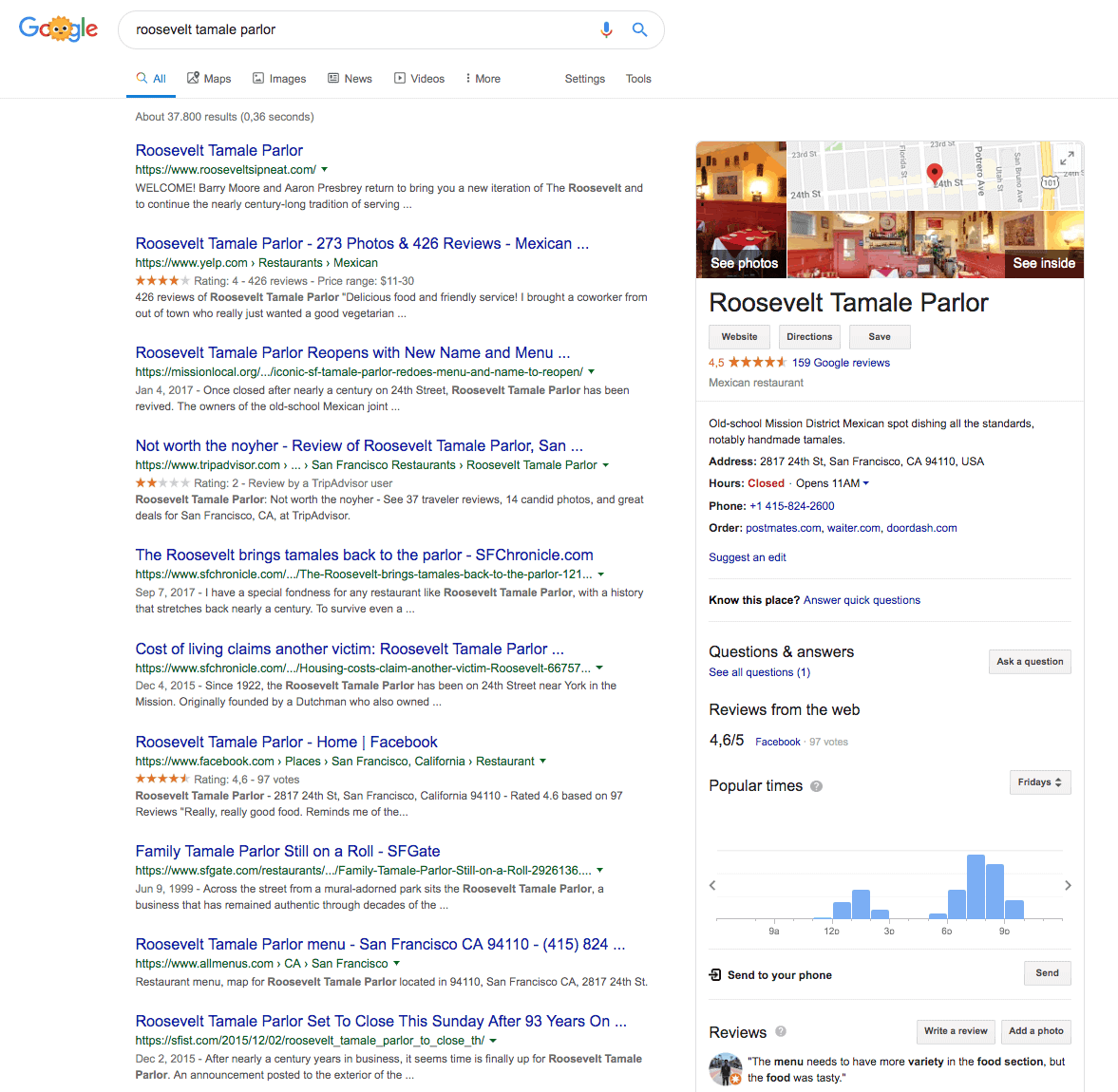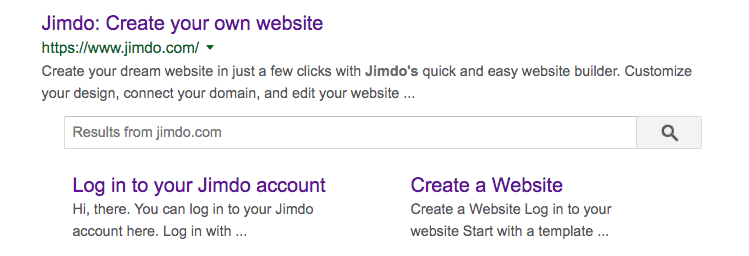As a small business targeting potential customers in your local community, it’s important to rank high in local search results. According to a study by BrightLocal, 69% of consumers look online for local businesses on a monthly basis. So if you want to get more people through the door, it’s time to start thinking about a local SEO marketing strategy. With services like Google My Business and Yelp, your business can show up in search results even if you don’t have a website. That being said, it’s still incredibly valuable to create a website for your business. And more visibility means more clientele!
In this post, you’ll find three quick and easy steps to improve local search rankings for your business.
- What is local SEO?
- Step 1: Local business profiles in online directories
- Step 2: Local keywords, metadata, and the right domain name
- Step 3: Social networks as local marketing channels
What is local SEO?
You’ve probably had an experience where you’re looking for a hairdresser in the area, need a new dentist or just want to buy a new bike. And what’s the first thing you do? Probably grab your smartphone or laptop and search for providers in your area.
And this is exactly where local search engine optimization comes in! The goal is for customers to see your medical website, coaching site or salon website on the first page of Google if they’re looking for offers in the area.
The advantage of local searches is that the demand for your product or service already exists! All you have to do is to make the prospective customer aware of you and give them the most important information so they can contact you.
So what used to be the classic Yellow Pages ad, is today what local SEO marketing is for your business.
Step 1: Create local business profiles
To determine the authenticity of a physical business, Google references data from many sources, especially online yellow page style services. Some of these services, as well as local business search sites, rely on user contribution for their data. As a business owner, ensuring this data is accurate and consistent on the web is crucial. If you notice any discrepancies, take action as soon as you can. For new business owners, here’s the best way to get started:
Tip: Use Jimdo’s Business Listings feature to update your business profile across multiple platforms at once, automatically.
Google My Business
Google My Business has a free signup process that’s fast and easy, and it will give you instant visibility online. If a customer searches for your business on Google, your business name, address, phone number, opening hours, and other information will appear in the knowledge graph on the right-hand side of the search engine results page.
In this article, we explain how to claim your business on Google My Business in just a few steps.

Yelp and other services
Yelp is another important place to promote your business. You can create a free account in just a few minutes, and users searching for a particular business will often see a Yelp information page as one of the top results. Similar to Google My Business, you’ll want to enter your business name and all other important information when you sign up.
While Google My Business and Yelp are used most often for business searches, you should also consider these options: Facebook, Twitter, Instagram, Foursquare, LinkedIn, Apple Maps and Yahoo! Local.
Bring your business online with Jimdo.
Step 2: Do local keyword, metadata and domain name research
If you already have a website for your business, the most important information to have on your site, in terms of search ranking, is your business name, address, and phone number. Google will look for this information on your site and analyze it for accuracy and consistency with other sites that host your information. It’s also a good idea to post this information on every page of your website.
If you don’t have a website yet for your business, you should get started building one right away. The first step is choosing the right domain name, and using your business name is a safe bet as long as it isn’t too long. Next, make sure your homepage title tag is optimized. A title tag is the main text that describes one page of a website. In the example below, the title tag is “Jimdo: Create your own website.”

For small businesses, I suggest setting your homepage title tag as follows: industry-specific keyword(s) – city, state abbreviation – business name. If you’re in the furniture business, this would be a great example:
- Furniture Store – San Francisco, CA – Asterisk Furnishings
It’s important to remember that most title tags are cut off in search results after 55-60 characters (including spaces), so consider this before getting started.
Tip: Use your keywords naturally in the website copy. “Keyword stuffing” and stringing together keywords is best avoided if you want your website to appear trustworthy. Read more in our Guide to Keyword Research.
Choosing a domain name
Your web address (domain) can instantly show customers that you’re a local business, service or restaurant. You’ve probably come across domain names like “www.gelato-bronx.com” for example.
These domains make sense, as customers immediately know where to find you and what you do. I always advise integrating your company name into the domain—provided it’s not too long. Here’s more about how to find the perfect domain name.
Bring your business online with a custom domain.
Step 3: Consider social networks as local marketing channels
Facebook and other social media platforms are getting smarter by the day. They don’t just show people all the posts or pages available, they filter them for relevance. That’s why users also get targeted news from their local area and you should use that to your advantage!
Having a company profile on Facebook and Instagram is a great addition to your website. Not only is it a great way to attract new customers but it also ties existing customers to your community.
The nice thing about social media is that it’s an interactive channel. You can easily keep in touch with your customers through regular posts and photos, and communicate with them directly.
Bring your business online with Jimdo.
Social media is also great for your local SEO, as Google rates active profiles the highest and shows them in search results. Of course, you can also send people to your website via links on your social media profiles and expand your network.
Looking for ideas as to how to develop your social media strategy and what you should post on Facebook, Instagram, etc.? In this article, we’ll show you how a small company can use social media effectively.
Tip: Facebook Ads are much cheaper than most people think. You can easily reach customers in your area with Facebook Ads from as little as $2—so why not give it a try!
Do you have any questions about online marketing for small businesses? Are there specific topics that we should discuss in more detail? Let us know in the comments!

